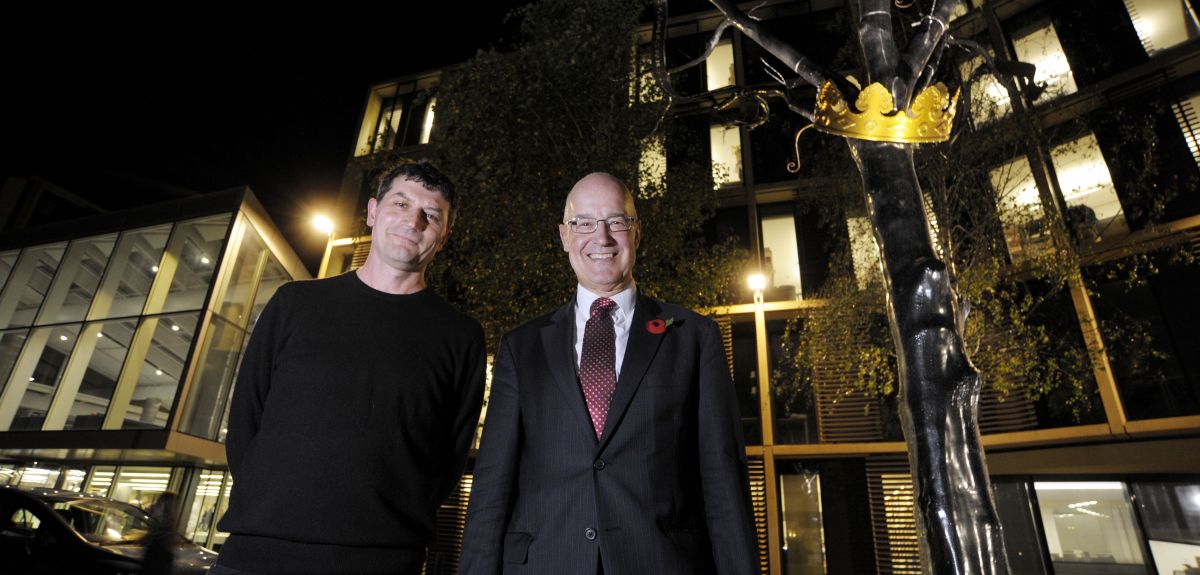
Photo by David Fleming
Public art installed on Radcliffe Observatory Quarter
A tree being planted on Oxford University’s Radcliffe Observatory Quarter would not normally be considered news.
But an interesting piece of public art, which was unveiled by Oxford's Vice-Chancellor Professor Andrew Hamilton on Friday, is worth a mention.
The Alchemical Tree was designed by artist Simon Periton and is the first piece of art to go on the University’s Radcliffe Observatory Quarter (ROQ).
The ROQ is the largest development carried out by the University in living memory. When all the buildings on the site are finished, it is intended that the ROQ will open up the area between Woodstock Road and Walton Street.
There is already a publicly-accessible path across the site and members of the public are encouraged to look at the architecture of buildings such as the Mathematical Institute and the Blavatnik School of Government and visit the café in the Mathematical Institute.
The public artworks represent yet another reason to visit the Quarter.
Simon Periton was appointed as site-wide artist for the ROQ in 2012 and holds an Artist’s Fellowship for the site. The public art strategy for the ROQ is curated by Modus Operandi. TORCH | The Oxford Research Centre in the Humanities has been involved in the development of the strategy.
Here is how Modus Operandi describe the tree:
'The Alchemical Tree was inspired by historical images of such trees, symbolising growth, transformation, interdisciplinary collaboration and a quest for knowledge. Periton’s Alchemical Tree – cast from an ash tree in Norfolk – features a golden crown hooked around the trunk, below a series of scrolled banners amongst the tree’s branches and inscribed with texts suggested by departments based within the ROQ.
'The crown references an illustration from Salomon Trismosin’s manuscript Splendor Solis (a famous treatise on alchemy from the 16th century), and represents the successful attainment of a higher state, a realisation of perfection.'